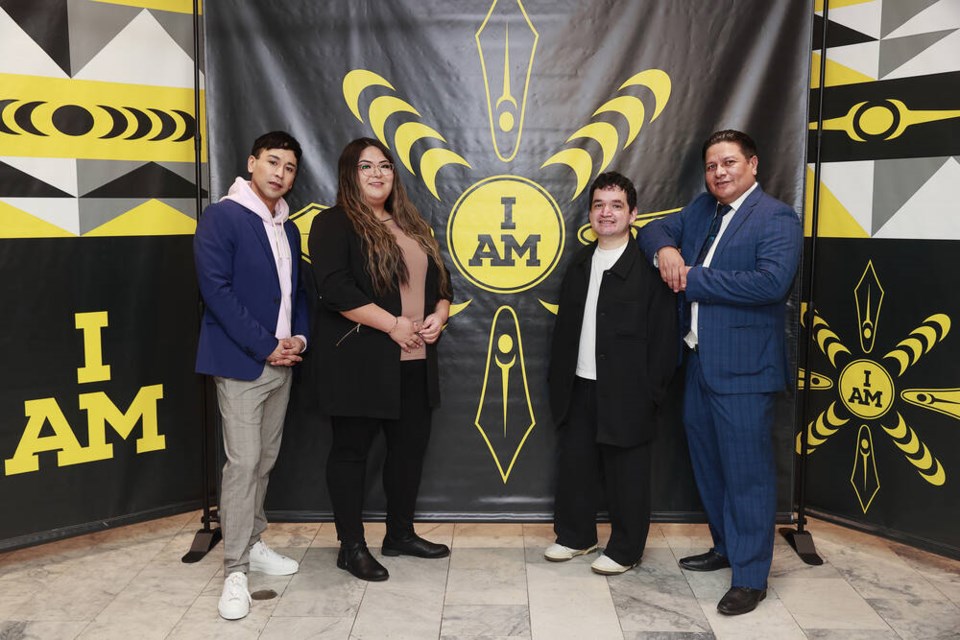A celebration of traditional Indigenous design has been revealed as the visual identity for the 2025 Invictus games.
During a protocol gathering at the Vancouver Art Gallery Jan. 23, the Invictus Games Vancouver Whistler 2025 and four host First Nations presented the artwork for the upcoming international sporting event, set to take place in Vancouver and Whistler Feb 8 -16 next year.
A collaborative effort between Sḵwx̱wú7mesh Úxwumixw (Squamish Nation) artist Ray Natraoro, səlilwətaɬ (Tsleil-Waututh Nation) artist Olivia George, Musqueam Nation artist Mack Paul and Lil’wat Nation artist Levi Nelson, the logo showcases the cultural traditions of the four host Indigenous Nations.
“We wanted to represent our territory, where we come from,” said master carver and canoe maker Natraoro.
“The final designs are rooted in cultural traditions of the Pacific Northwest’s Salish people. They reflect the spiritual and cultural significance of Salish art symbols, and showcase varying perspectives brought forth by each artist.”
The two-tone circular logo features traditional Indigenous symbolism, such as oval shapes, crescents and trigons, alongside portrayals of wooden canoe paddles. The paddles are an interpretation of how “we’re all connected through waterways” said Natraoro, and they represent how life is about the journey, “not the destination.”
The colours were chosen for their symbolism within Coast Salish customs, with black symbolizing war and warriors and yellow representing high cultural values - Indigenous people who have a “high class of dignity,” he added.
The local artist, who has been carving since 1994 and creating limited edition, Coast Salish design prints since 2007, said collaboration between the four Host Nations had been "effortless" and the final design had come to the group naturally.
“There was this mutual respect between the Nations, and our relationship grew as we honoured each others cultural values. There were so many ways that we were able to look at and work with the similarities of our people, it just organically came together," he said.
The piece marks the first-time individual artists from each of the four First Nations have come together to create a single piece of art for a major sporting event.
Nick Booth, Interim CEO of the Invictus Games Vancouver Whistler 2025, said the collaboration to design the visual identity for the Games offers "just one example" of the important role that the Host First Nations will play in planning and co-hosting the event.
“Through the power of sport, the Four Host First Nations and the Invictus Games Vancouver Whistler 2025 will work together to highlight the shared journey of recovery of Indigenous communities and military service members and Veterans in overcoming adversity," he said.
Founded by Prince Harry, the Duke of Sussex, in 2014, the Games were designed to inspire and celebrate wounded, injured and sick servicemen and women, both serving and veterans.
Natraoro, whose great grandfather Andy Natrall had been a master carver and First World War veteran, said he was "highly honoured" to be selected as the Squamish Nation representative.
"I wanted to participate in his honour, and all war veterans' honour," he said.
“The warriors that go out for service, they are protectors of the people. They sacrifice their lives for a bigger cause, and so the meaning behind Invictus is to celebrate that. It’s a healing of all people.”
Mina Kerr-Lazenby is the North Shore News’ Indigenous and civic affairs reporter. This reporting beat is made possible by the Local Journalism Initiative.



